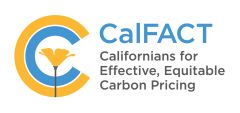The goal of California’s cap and trade program is to reduce greenhouse gas emissions so we can hit our climate goals of 40% reduction by 2030 and 80% reduction by 2050.
Unfortunately, that goal could be undermined by two issues: surplus allowances from the current program and carbon offsets.1
Surplus Allowances
In the current program, actual emissions are below the cap so far, primarily due to the economic crash in 2008, declining prices for renewables, and faster improvements in energy efficiency. According to Dr. Chris Busch at Energy Innovation LLC, the current cap and trade program could have 190 to 300 million surplus allowances by 2020.
The California Air Resources Board (CARB) expects cap and trade to provide 191 to 342 million metric tonnes of emission reductions from 2021 to 2030.
If surplus allowances are allowed to carry over to the post-2020 program they would allow polluters to meet cap and trade requirements on paper only with no real emissions reductions in practice and we would not meet our 2030 goals.
SB775 addresses this by making a clean break with the current program and not allowing any allowances to carry over. Others have suggested discounting the value of any allowances carried forward.
Regardless of how it is done, any cap and trade bill designed to actually meet our climate goals must address this issue.
Carbon Offsets
Carbon offsets allow polluters to avoid emissions cuts by paying for cheaper emission reductions outside the program, and generally outside the state.
Currently polluters can use offsets for up to 8% of their emissions allowances. This may seem small, but the total offsets used from 2021 to 2030 could equal 227 million allowances -— more than the total reductions expected by CARB from cap and trade.
Carbon offsets are often difficult to verify and may not result in the reductions claimed. In either case, any emissions reductions are not likely to happen in the California communities affected by the current pollution.
SB775 eliminates offsets entirely.
References
1. Hot air and offsets in California’s post-2020 carbon market by Stanford Economist Danny Cullenward
